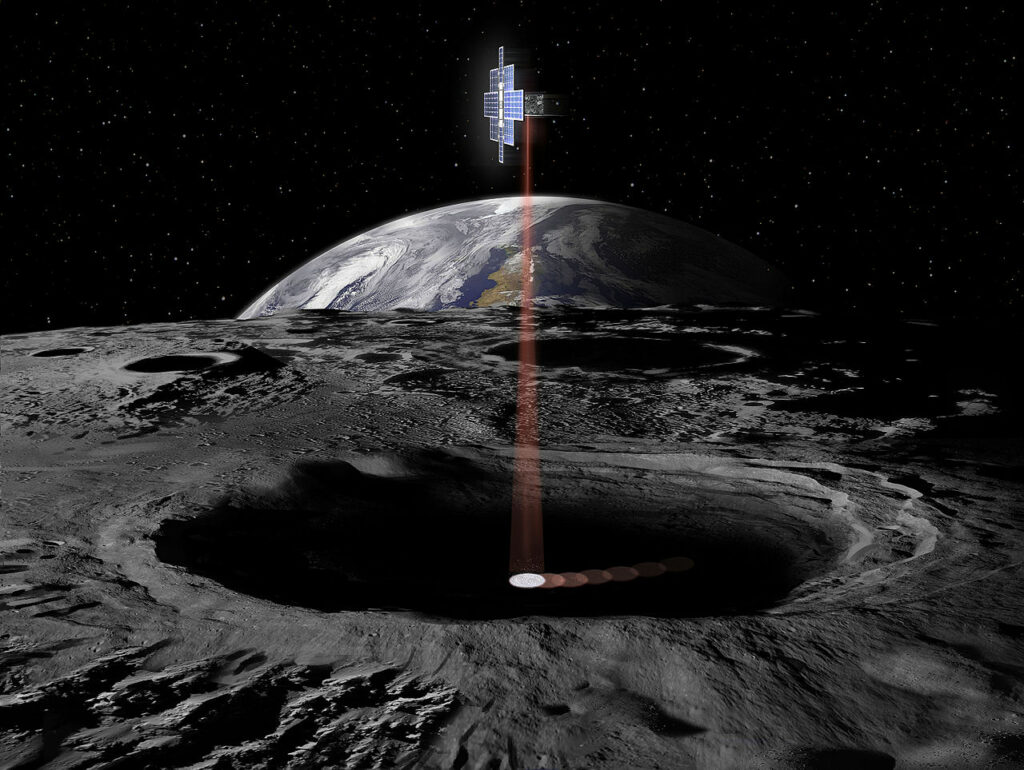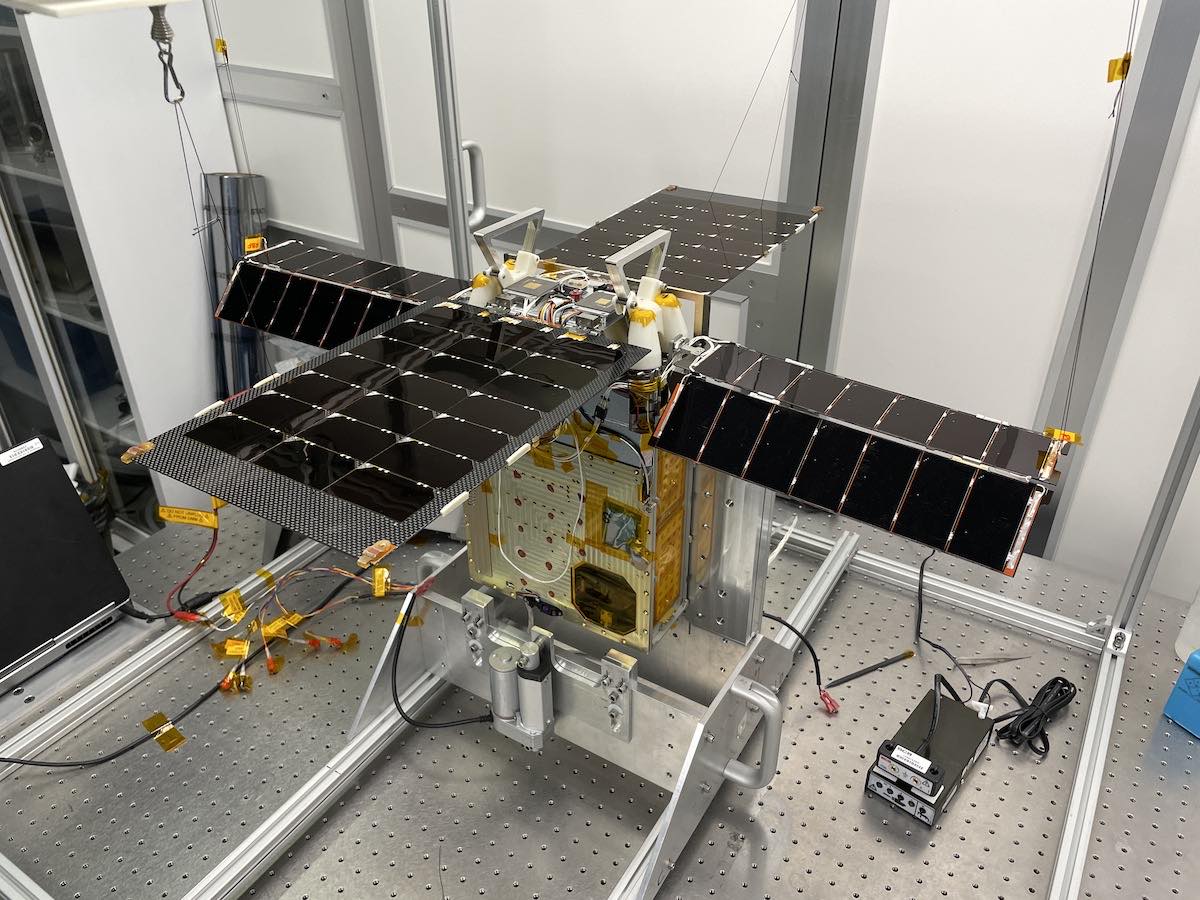The Lunar Flashlight, designed to search for water ice in the polar craters of the Moon, has found a new carrier. The satellite will be launched as a passing cargo by a Falcon 9 rocket at the end of 2022.
Technical device and objectives of the Lunar Flashlight
Lunar Flashlight was developed by a team consisting of employees of NASA’s Jet Propulsion Laboratory, the University of California and the Marshall Space Center. It is a 14-kilogram spacecraft created on the basis of the CubeSat (6U) platform. The satellite will be put into a polar orbit around the Moon. In the periapsis it will approach the lunar surface by 20 km, in the apoapsis it will move away from it by 5 thousand km.

The main purpose of the probe is to search for traces of water ice and volatile substances in the polar craters of the Moon. For this purpose, Lunar Flashlight is equipped with an infrared laser and a spectrometer. During the flight over the polar craters, the satellite will highlight their bottom with a laser. The spectrometer will analyze the light reflected from the lunar surface, which will determine its composition.
Interestingly, the initial concept of the mission was much more ambitious and assumed equipping the satellite with a solar sail with a surface area of 80 m2. It was planned to use it as a lantern to illuminate the polar craters of the Moon, which are in the eternal shadow, in order to directly capture the deposits of water ice. Later, this idea was abandoned because of its complexity and high cost.
Lunar Flashlight Launcher
Initially, Lunar Flashlight was supposed to go to the Moon as part of the Artemis I mission. It was one of 13 additional cargo that was planned to be sent into space together with the Orion spacecraft. However, due to difficulties with the creation of the propulsion system, the satellite was not ready at the right time. Because of this, the mission specialists had to start looking for another “ride”.

As a result, the Falcon 9 rocket was chosen as the carrier. Now Lunar Flashlight will go to the Moon together with the NOVA-C probe built by Intuitive Machines, which will have to make a soft landing in the Schroeter Valley area. Currently, the launch of this mission is scheduled for December 22, 2022.
Recall that NASA recently returned the SLS rocket to the launch pad.
According to https://spaceflightnow.com
Follow us on Twitter to get the most interesting space news in time
https://twitter.com/ust_magazine

